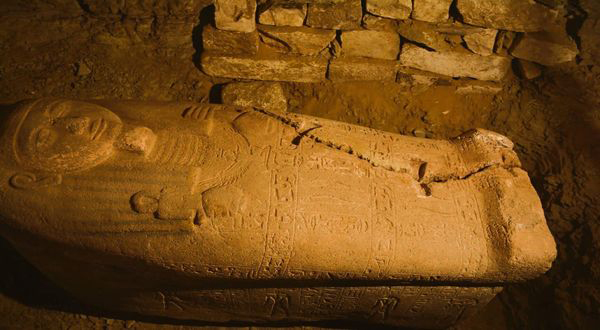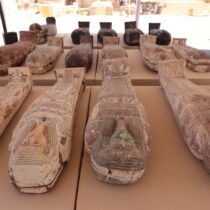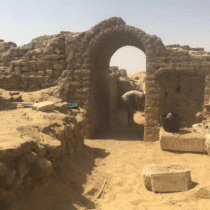Archaeologists have uncovered the granite sarcophagus of a high-ranking official from the reign of Ramesses II at Saqqara, Egypt.
Dr. Ola El-Aguizy from the Faculty of Archaeology at Cairo University has led the excavations in the area around the ascending corridor of the pyramid of King Unas.
The archaeologists discovered a burial chamber containing the sarcophagus of Ptah-em-uya, a high-ranking official who was the “royal secretary, chief overseer of cattle and head of the treasury of the Ramesseum (the mortuary temple of Ramesses II),” according to Mostafa Waziri, head of Egypt’s Supreme Council of Antiquities.
The sarcophagus can thus be dated to the 13th century BC and the 19th Dynasty of Egypt, a period also known as the Ramessid dynasty when the New Kingdom of Egypt reached the peak of its power.
The sacred texts on the sarcophagus contain symbols such as the “djed” which is associated with the creator god Ptah and Osiris, and the “tyet” (knot of Isis or girdle of Isis), which was believed to protect the deceased, as well as scenes representing the sons of the god Horus. The coffin lid appears to be broken, indicating that the tomb was previously looted. Traces of resin produced through the process of mummification were found.
Recent excavations in Saqqara have also unveiled a cache of 150 bronze statuettes in May, five ancient tombs in March, and more than 50 wooden sarcophagi n 2021 dating back to the New Kingdom Period.





